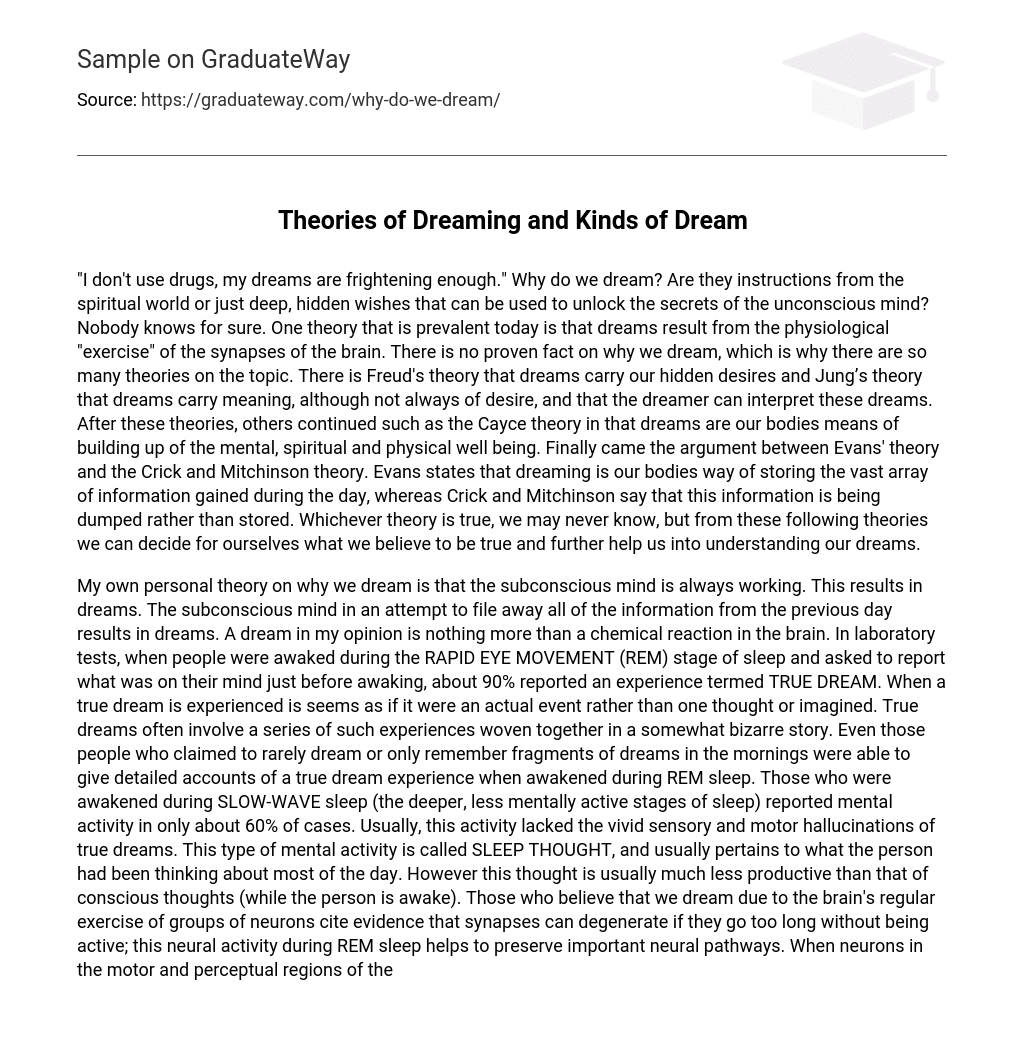Why do we dream? Are they instructions from the spiritual world or just deep, hidden wishes that can be used to unlock the secrets of the unconscious mind? Nobody knows for sure. One theory that is prevalent today is that dreams result from the physiological “exercise” of the synapses of the brain. There is no proven fact on why we dream, which is why there are so many theories on the topic. There is Freud’s theory that dreams carry our hidden desires and Jung’s theory that dreams carry meaning, although not always of desire, and that the dreamer can interpret these dreams.
After these theories, others continued such as the Cayce theory in that dreams are our bodies means of building up of the mental, spiritual and physical well being. Finally came the argument between Evans’ theory and the Crick and Mitchinson theory. Evans states that dreaming is our bodies way of storing the vast array of information gained during the day, whereas Crick and Mitchinson say that this information is being dumped rather than stored. Whichever theory is true, we may never know, but from these following theories we can decide for ourselves what we believe to be true and further help us into understanding our dreams.
My own personal theory on why we dream is that the subconscious mind is always working. This results in dreams. The subconscious mind in an attempt to file away all of the information from the previous day results in dreams. A dream in my opinion is nothing more than a chemical reaction in the brain. In laboratory tests, when people were awaked during the RAPID EYE MOVEMENT (REM) stage of sleep and asked to report what was on their mind just before awaking, about 90% reported an experience termed TRUE DREAM. When a true dream is experienced is seems as if it were an actual event rather than one thought or imagined. True dreams often involve a series of such experiences woven together in a somewhat bizarre story.
Even those people who claimed to rarely dream or only remember fragments of dreams in the mornings were able to give detailed accounts of a true dream experience when awakened during REM sleep. Those who were awakened during SLOW-WAVE sleep (the deeper, less mentally active stages of sleep) reported mental activity in only about 60% of cases. Usually, this activity lacked the vivid sensory and motor hallucinations of true dreams. This type of mental activity is called SLEEP THOUGHT, and usually pertains to what the person had been thinking about most of the day. However this thought is usually much less productive than that of conscious thoughts (while the person is awake).
Those who believe that we dream due to the brain’s regular exercise of groups of neurons cite evidence that synapses can degenerate if they go too long without being active; this neural activity during REM sleep helps to preserve important neural pathways. When neurons in the motor and perceptual regions of the brain are exercised in this manner, the inevitable side-effect are the dreams we experience. The increased mental thought activity is due to the sleep thought being engaged in trying to make sense of these movements and hallucinations.





